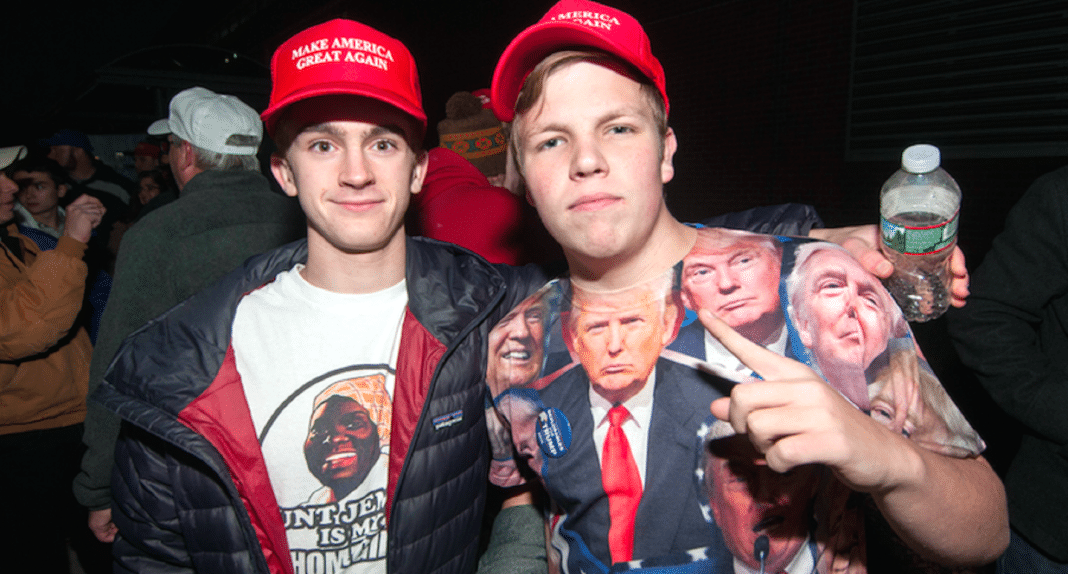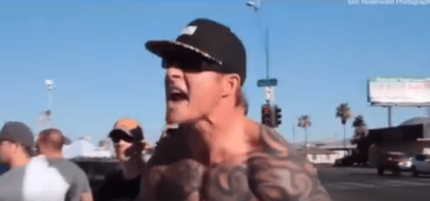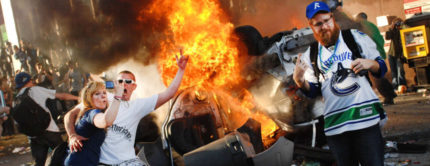
A Brookings study finds that as “deaths of despair” among white Americans without a college education has driven the U.S. life expectancy downward, poor Black Americans are the most optimistic — far more than poor white people, despite the fact that poor Black people have the hardest time in America. (Photo: Andrew Cline/Shutterstock)
While Black people have long been the victims of discriminatory policies, institutional racism and violence, they have every reason to be the least optimistic people in America. However, they are not, according to a recent study. Research suggests that generally, poor Black people are more optimistic than their poor white counterparts.
A study from Carol Graham at the Brookings Institution revealed that as “deaths of despair” among uneducated white Americans has been enough to drive the U.S. life expectancy downward, poor Black Americans are the most optimistic — even slightly more optimistic than rich Black people. Further, poor Black people are three times more likely to be more optimistic than poor white people. Black and Latino people are also more likely to say their lives are better than those of their parents. This does not discount the stress and challenges that visit the Black community, but this stark difference across racial groups in poverty is instructive.
Poor white people, who for years have been exposed to the right-wing echo chamber of Fox News and other similar media outlets, have been conditioned into believing that poor folks are in their current condition due to their own moral failings and shortcomings, and that the rich are the winners because they work hard, as Salon noted recently. The prosperity gospel to which many white fundamentalists subscribe, the notion that Jesus will bless those who have faith, is in marked contrast to those social and racial justice-oriented Black houses of worship in the AME church and elsewhere.
The narrative of white rage — or white tears — was promoted in a 2016 NBC News/Survey Monkey/Esquire poll, which found that while 49 percent of Americans are angry, that anger is not distributed evenly. Whites were the angriest at 54 percent, followed by Latinos at 43 percent, and African-Americans at 33 percent. In addition, 73 percent of whites said they are angry at least once a day, as opposed to 66 percent of Latinos and 56 percent of Blacks who responded the same way. The poll came as much attention was paid to the self-destructive behavior of white people, and higher rates of death brought upon by suicide, alcohol and opioid abuse due to despair, depression and stress. This as white rural America experiences soaring crime rates.
When worked-up white people believe Black progress and economic well-being come only at the expense of white America, they also take it out on Black people through racial violence. Blaming Black people for white problems was part of the Republican Party’s Southern Strategy of winning the white racist vote without sounding like the Ku Klux Klan.
“You start out in 1954 by saying, ‘N****r, n****r, n****r.’ By 1968 you can’t say ‘n****r’—that hurts you, backfires. So you say stuff like, uh, forced busing, states’ rights, and all that stuff, and you’re getting so abstract,” said the late GOP strategist Lee Atwater on the Southern Strategy. “Now you’re talking about cutting taxes, and all these things you’re talking about are totally economic things and a byproduct of them is, blacks get hurt worse than whites.… ‘We want to cut this,’ is much more abstract than even the busing thing, uh, and a hell of a lot more abstract than ‘N****r, n****r’” he added.
In the Old South of the Democratic Party, white supremacy prevented alliances between poor Blacks and poor whites in order to preserve the planter aristocracy and disempower Black people and many poor whites. Similarly, the Southern Strategy helped wrest control in the South from the Democrats to the GOP through the politics of racial resentment and voter suppression. As President Lyndon B. Johnson once said: “If you can convince the lowest white man he’s better than the best colored man, he won’t notice you’re picking his pocket. Hell, give him somebody to look down on, and he’ll empty his pockets for you.”
White resistance to Black progress was evident in the rise of Trump and the “Make America Again” slogan, reflecting a sentiment of white grievance and white genocide, the white supremacist notion that white people are an endangered species and victims of racial discrimination. The solution to white genocide includes measures such as a rollback of civil rights enforcement and affirmative action, voter suppression, mass incarceration and police violence in communities of color, and a crackdown on the flow of immigration from nonwhite, “shithole” countries.
Van Jones, referring to the Trump victory as a “whitelash” against changing demographics in America, has said Black people and progressives need to have conversations with Trump voters and bridge the divide among people who have been disappointed by both political parties. “Look, I think Trump is worse than people fear ― and I think many of the Trump voters are better than people know. The truth is messy,” Jones said. However, there is evidence that the truth is more straightforward. Researchers concluded that the greatest threat to democracy comes from intolerant white people, who reject democratic governance and equality because democratic principles include protecting the rights of marginalized minority groups. Rather, whites who think like this, such as Trump supporters are more receptive to authoritarian rule by the military or a dictator. According to a recent poll, only 14 percent of Trump voters believe he should resign if it is found his campaign colluded with Russia in the 2016 election, with 77 percent insisting he should remain in office even if the conspiracy claims are true.
In addition, for all of the railing against welfare and government support programs, white Americans support welfare, assuming it is designed solely for their benefit. Trump’s $12 billion subsidy to farmers harmed by the trade war he started with nations such as China is a case in point.
Meanwhile, the demonization of Black poverty as a function of laziness and dependency has been upended as the dysfunctional and destructive white response to hard times is on full display in America. Toxic whiteness is also in full force, as is white fragility.


